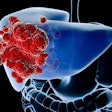Although earlier studies have indicated that CT is an effective screening tool for potentially lethal aortic injury and may reduce the need for aortography, none had previously involved consistent angiographic follow-up of scans that were "normal" or "negative" for aortic injury.
The study at two Colorado Level 1 trauma centers looked at 382 patients who underwent both CT and aortography after chest trauma. Among these there were no false-negative CT scans: All of the CT scans that ruled out aortic injury were confirmed at aortography, giving CT a 100% negative predictive value and 100% sensitivity. This group did not include 207 patients who went directly to aortography because there was a very high suspicion of aortic injury.
Because the technical costs and professional fees for CT scans are also cheaper than aortography ($468 per patient vs. $1,786 in this study,) the use of CT screening in such cases could also result in substantial cost savings. Other advantages of CT include easy emergency staff access to the equipment and quick results. Therefore, the authors recommended CT as the study of choice even in patients with highly suspected aortic injury.
To see the full text of this article, visit
www.rsnajnls.org
The study at two Colorado Level 1 trauma centers looked at 382 patients who underwent both CT and aortography after chest trauma. Among these there were no false-negative CT scans: All of the CT scans that ruled out aortic injury were confirmed at aortography, giving CT a 100% negative predictive value and 100% sensitivity. This group did not include 207 patients who went directly to aortography because there was a very high suspicion of aortic injury.
Because the technical costs and professional fees for CT scans are also cheaper than aortography ($468 per patient vs. $1,786 in this study,) the use of CT screening in such cases could also result in substantial cost savings. Other advantages of CT include easy emergency staff access to the equipment and quick results. Therefore, the authors recommended CT as the study of choice even in patients with highly suspected aortic injury.
To see the full text of this article, visit
www.rsnajnls.org
















